Best Japanese Wok Brands 2025: Authentic Made-in-Japan vs Chinese Marketing Myths
The Complete Guide to Authentic Japanese Wok Brands: Yamada, Yoshikawa, Riverlight & Real Quality
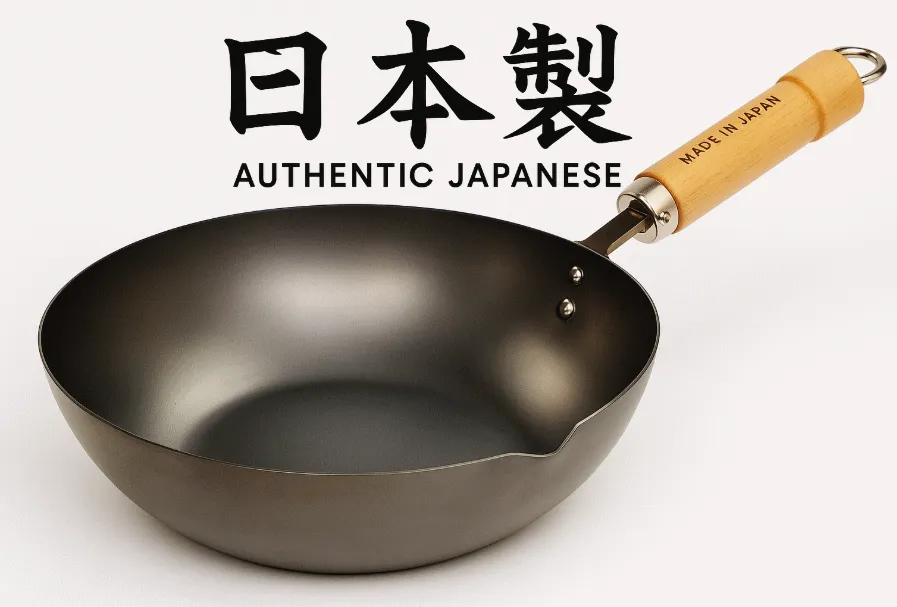
Are you tired of "Japanese-style" woks that are actually made in China? Want to know which brands offer genuine Japanese craftsmanship versus clever marketing? This comprehensive guide reveals the truth about authentic Japanese wok manufacturers and helps you make an informed decision.
Why This Guide Matters: The Great Japanese Wok Confusion
Here's something that might surprise you: woks aren't originally Japanese. They're a Chinese invention that traveled to Japan and evolved into something uniquely Japanese. This cultural journey has created massive confusion in today's market.
📝 Quick Context: The Japanese term for wok is "chūkanabe" (中華鍋), literally meaning "Chinese pot." Learn more about how Japan perfected Chinese wok cooking in our cultural deep-dive.
The problem? Countless brands use Japanese names, aesthetics, and marketing to sell Chinese-made woks. While some of these perform excellently, they're not what they claim to be. If you value authenticity and want to understand what you're actually buying, this guide is for you.
Understanding Japanese Wok Excellence: What Makes Them Different
Before diving into specific brands, let's establish what defines a truly exceptional Japanese wok. Understanding these fundamentals will help you evaluate any wok beyond just the brand name.
The Material Science Behind Superior Performance
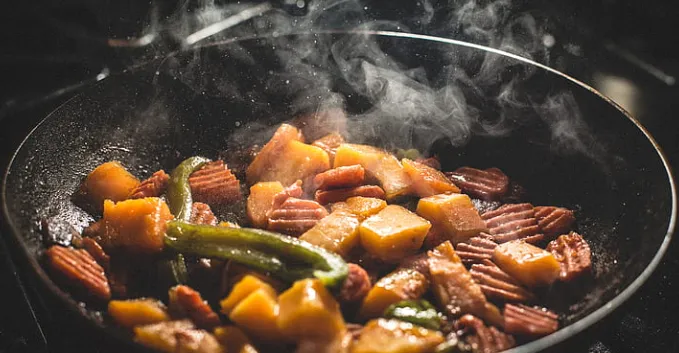
Carbon Steel: The Professional's Choice
Most premium Japanese woks use carbon steel for good reason. It heats rapidly, responds instantly to temperature changes, and develops an incredible natural non-stick surface over time.
⚡ Technical Note: Look for 14-16 gauge carbon steel (1.6-2.0mm thickness). This provides the perfect balance of heat responsiveness and structural integrity without warping. Thinner gauges (1.4-1.5mm) offer faster response but higher warping risk.
Cast Iron: Traditional Heat Retention
Cast iron woks excel at heat retention—once hot, they stay hot, providing powerful searing. However, they're slow to heat and cool, making them less responsive than carbon steel.
🏺 Japanese Specialty: Authentic Nanbu Tekki cast iron from Iwate Prefecture represents the pinnacle of Japanese cast iron craft, made through manual sand-mold processes at 1500°C.
Nitriding Technology: Japan's Modern Innovation
Here's where Japanese manufacturers truly shine. Many use a thermochemical process called nitriding, where nitrogen is infused into the steel surface at high temperatures. This creates a permanent, integral layer that's:
- Extremely rust-resistant
- Harder and more durable than untreated steel
- Naturally low-maintenance
- Free from synthetic coatings that can chip or release fumes
🔬 Why This Matters: Unlike non-stick coatings that break down at high heat, nitrided surfaces actually improve with the intense temperatures needed for proper wok hei.
Materials to Avoid
Stainless Steel: Heavy, slow to heat/cool, causes severe sticking—poor choice for wok cooking.
Non-Stick Coatings (PTFE/PFOA): Dangerous at wok temperatures. High heat causes coating breakdown, toxic fume release, and permanent non-stick property loss.
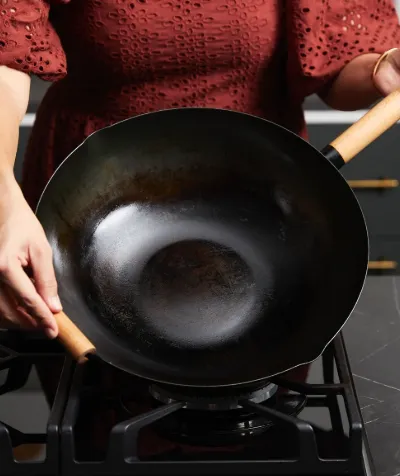
Manufacturing Techniques That Matter
Hand-Hammering (Uchidashi) Traditional Japanese hand-hammering involves striking a steel sheet thousands of times to form the wok shape. This process:
- Compacts and strengthens the metal's crystalline structure
- Creates textured dimples that help with food manipulation
- Results in a lighter, stronger pan than pressed alternatives
Modern Precision Manufacturing Japanese manufacturers in regions like Tsubame-Sanjo combine traditional principles with cutting-edge technology, creating woks that honor heritage while solving modern cooking challenges.
Comprehensive Brand Comparison: The Complete Picture
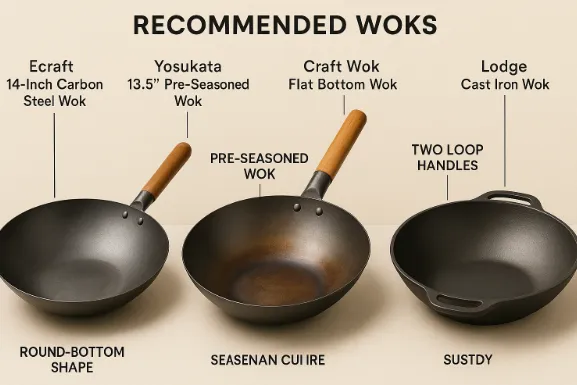
Table 1: Authentic Japanese Wok Brands — Detailed Analysis
| Brand | Signature Technology/Craft | Primary Material | Manufacturing Location | Price Tier | Gauge/Thickness | Best For |
|---|---|---|---|---|---|---|
| Yamada Kogyosho | Uchidashi (Hand-Hammering) | Iron/Carbon Steel | Yokohama, Kanagawa | $$ | 1.2mm or 1.6mm | The Purist: Traditional craft, uncompromising performance |
| Yoshikawa | Nitriding Heat Treatment (Cook-Pal Ren) | Carbon Steel/Iron | Tsubame-Sanjo, Niigata | $$$ | 1.6-2.0mm | The Pragmatist: Modern tech, low maintenance, IH compatible |
| Summit Kogyo | Nitrogen-Hardening, Hammering, Spun | Iron/Carbon Steel | Tsubame-Sanjo, Niigata | $$ | Variable thickness design | The Versatile Buyer: Range of options, good value |
| Pearl Life | Nitriding + "Fiber-Line" Texture | Iron/Carbon Steel | Tsubame-Sanjo, Niigata | $$ | Lightweight design | The User-Centric Cook: Weight reduction, ease of use |
| Riverlight | Nitriding Heat Treatment (KIWAME) | Iron/Carbon Steel | Chiba | $$$ | Professional grade | The Enthusiast: Cult favorite, artisan quality |
| Iwachu | Nanbu Tekki Traditional Casting | Cast Iron | Morioka, Iwate | $$$$ | 3mm+ | The Connoisseur: Heirloom traditional Japanese art |
| Sori Yanagi | Industrial Design + Nitriding | Carbon Steel/Iron | Japan | $$$ | Modern precision | The Design Aficionado: Iconic design meets function |
Table 2: Non-Japanese Brands with Japanese Marketing
| Brand | Marketing Angle | Actual Origin | Manufacturing | Key Features | Performance Rating | Price Tier | Target Audience |
|---|---|---|---|---|---|---|---|
| Yosukata | Japanese name, "Designed by chefs" | Hong Kong Co. | China | Pre-seasoned, excellent design, high performance | 8.0/10 | $$ | Performance-driven cooks |
| Joyce Chen | Historic legacy, "Accessible Chinese cooking" | US Brand | China/Taiwan (likely) | Spun carbon steel, budget-friendly | 6.5/10 | $ | Beginners, value-seekers |
| Misen | DTC, "Honest prices," Modern design | US Brand | China (Shanghai area) | Pre-seasoned, sleek design, stainless handles | 7.0/10 | $$ | Modern home cooks |
| Mammafong | "Authentic hand-hammered," Family story | Australian Co. | China | Hand-hammered, pre-seasoned options | 7.5/10 | $$ | Authentic Chinese craft seekers |
| Craft Wok | "Spirit of Chinese Master" | US Co. | China | Traditional hand-hammered style | 6.0/10 | $ | Budget traditional style |
| ZhenSanHuan | Artisanal Chinese craft, "A Bite of China" | China Brand | China | 36,000 hammer strikes, premium positioning | 7.5/10 | $$$ | Luxury Chinese craft |
| Souped Up Recipes | Influencer trust, Recipe library | US Influencer | China (likely) | Pre-seasoned, includes content | 0.6/10 | $ | YouTube followers, beginners |
Technical Specifications Deep Dive
Optimal Thickness Guide:
- 1.2mm (18 gauge): Ultra-responsive, professional grade, requires careful heating
- 1.4-1.5mm (17-17.5 gauge): Excellent responsiveness, slight warping risk
- 1.6mm (16 gauge): Sweet spot for home cooks—responsive yet stable
- 2.0mm (14 gauge): Maximum stability, slower response, ideal for induction
Handle Construction Analysis:
- Welded Handles: Superior design, smooth interior, easier cleaning (Yamada, Winco Japanese Style)
- Riveted Handles: Functional but creates interior bumps, potential loosening over time
Bottom Shape Considerations:
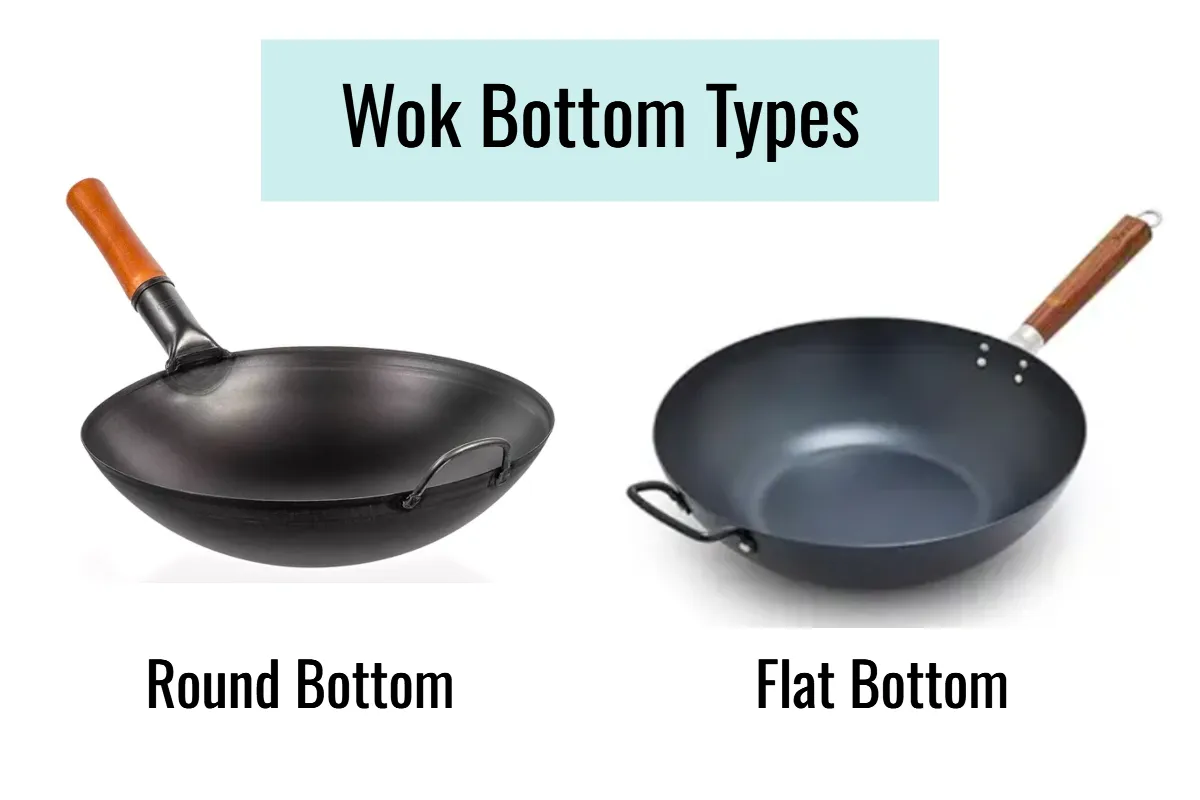
- Round Bottom: Traditional, requires wok ring, maximum heat efficiency with proper setup
- Flat Bottom: Modern adaptation, 4-5" flat area optimal for stability without losing wok characteristics
The Imposters: Understanding Japanese-Style Marketing
Your research highlighted a crucial market reality: many popular "Japanese" wok brands aren't Japanese at all. Let's address the most common examples.
The Yosukata Phenomenon: A Detailed Case Study
The Marketing Strategy: Japanese name creating immediate quality association, "founded by chefs," "designed by culinary experts in Asia," carefully crafted language that avoids direct Japanese claims while benefiting from the association.
The Reality: Hong Kong-based company, manufactured in China. Website states "authentically crafted in China" but leverages Japanese name for perceived quality boost.
Performance Analysis: Despite misleading branding, consistently scores 8.0/10 in expert testing:
- Excellent heat responsiveness
- Durable pre-seasoned surface
- Thoughtful design features (wooden handle, stable flat bottom)
- Superior performance vs. many authentic brands
Price Point: $60-65 USD, exceptional value for performance level
The Consumer Decision: Performance vs. authenticity trade-off. If cooking results matter most, Yosukata delivers. If Japanese manufacturing authenticity is important, look elsewhere.
American-Chinese Market Players
Joyce Chen Legacy:
- Heritage: 50+ years, Chinese-American culinary pioneer
- Innovation: Patented flat-bottom wok design for Western stoves (1970s)
- Reality: US brand, China/Taiwan manufacturing (likely)
- Performance: Solid starter wok, thin steel affects heat retention
- Price: $30-40, excellent entry point
Misen Modern DTC:
- Transparency: Open about Shanghai-area manufacturing
- Materials: Some Japanese raw materials (AICHI steel) but Chinese fabrication
- Design: Modern, sleek, direct-to-consumer focused
- Features: Pre-seasoned, heat-proof stainless handles, all-stovetop compatible
Chinese Craft Brands Embracing Heritage
Mammafong: Australian family business, Chinese handcraft focus Craft Wok: US company, "spirit of Chinese Master" marketing ZhenSanHuan: Premium Chinese brand, 36,000 hammer strikes, featured on "A Bite of China"
🎯 Marketing Strategy Note: These brands succeed by embracing authentic Chinese heritage rather than implying Japanese connection—a more honest approach that still leverages craft narrative.
Detailed Japanese Brand Profiles: The Real Deal
Yamada Kogyosho: The Last Artisan Workshop
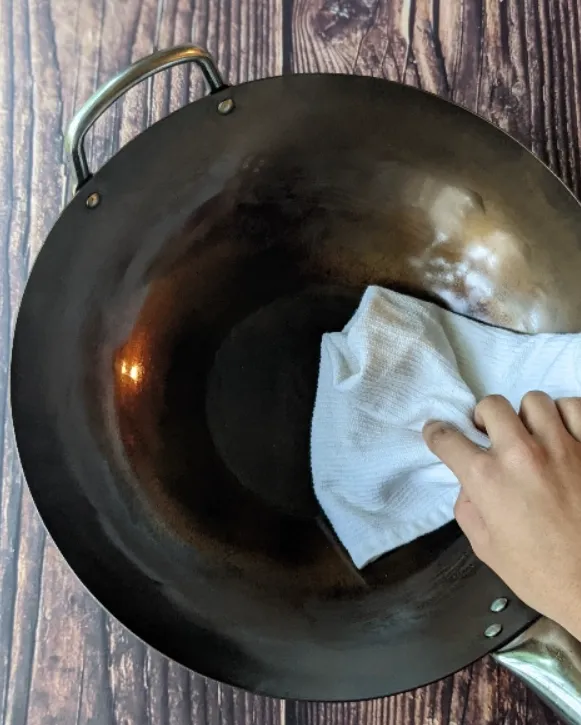
Company Heritage: Third-generation family operation since 1957, Yokohama location
Unique Position: Only remaining manufacturer in Japan using traditional Uchidashi hand-hammering
The Process:
- Thousands of hammer strikes per wok
- Crystalline structure compaction and strengthening
- Results in lighter, stronger pan than pressed equivalents
- Creates functional dimpled texture for oil adhesion and food manipulation
Product Specifications:
- 1.2mm thickness: Ultra-responsive, professional weight
- 1.6mm thickness: More durable, better heat retention
- Round-bottom and flat-bottom configurations available
- Unseasoned delivery: Ships with protective anti-rust varnish requiring burn-off
Aesthetic Philosophy: Intentionally "industrial" appearance—visible weld marks, color variations, unpolished surfaces are authentic craft markers, not defects
Target User: Purists seeking uncompromising traditional craft, willing to invest in proper maintenance rituals
Yoshikawa Corporation: Tsubame-Sanjo Innovation Leader
Regional Significance: Based in Japan's metalworking heartland since 1952
Cook-Pal Ren Technology:
- Proprietary high-temperature nitriding process
- Creates iron nitride + iron oxide surface layer
- Microscopic pores for effortless oil absorption
- Eliminates traditional burn-off requirement
Engineering Features:
- Thicker base construction: Prevents warping on induction cooktops
- Replaceable wooden handles: Long-term maintenance capability
- Superior IH compatibility: Heavy gauge prevents common thin-pan warping
Price Range: $199-399 CAD/AUD reflecting premium Japanese engineering
Perfect For: Serious cooks wanting Japanese quality without traditional maintenance demands
Summit Kogyo: The Balanced Manufacturer
Legacy: 70+ years experience, some records dating to 1919 founding
Product Philosophy: Bridges traditional and modern approaches
Range Diversity:
- Classic professional iron woks
- Tsuchime (hammered) textured models
- Modern nitrogen-hardened varieties
Signature Design: Graduated thickness construction
- Thicker bottom for heat retention
- Progressively thinner sides for weight management
- Balanced heat conduction across cooking surface
Market Position: Accessible pricing while maintaining authentic Japanese manufacturing
Pearl Life: User-Centric Engineering
Company Scale: Pearl Metal Co., Ltd. develops 1,000+ new products annually
Fiber-Line Innovation: Proprietary micro-groove surface texture beyond standard nitriding
- Improved oil distribution
- Enhanced non-stick performance
- Superior cooking efficiency
Weight Solutions: Spin processing creates progressive thinning toward rim, significantly reducing overall weight
Quality Assurance Note: Beware of inferior imitations with fake hammer marks and poor nitride finishes—always purchase from reputable vendors
Riverlight: The KIWAME Specialists
Company Identity: Chiba Prefecture artisan cookware specialist
Historical Decision: 1960s choice to perfect iron cookware while competitors pursued non-stick trends
KIWAME Series Features:
- Special nitriding heat treatment
- Extremely tough, scratch-resistant surface
- Superior rust resistance
- Lightweight construction for size/thickness
Market Status: "Cult favorite" among serious home cooking enthusiasts
Quality Distinction: KIWAME nitriding process considered superior to lower-quality market imitations
Artisanal Excellence: Iwachu & Sori Yanagi
Iwachu Nanbu Tekki:
- Certification: Official Traditional Craft of Japan
- Location: Morioka, Iwate Prefecture
- Process: Hand-casting using 800-year-old sand mold techniques
- Characteristics: Exceptional weight, unparalleled heat retention, heirloom quality
- Investment Level: Luxury functional art pieces
Sori Yanagi Design Institute:
- Designer Legacy: Post-war industrial design icon
- Philosophy: Traditional Japanese craft principles + Western industrial modernism
- Technology: Nitrided carbon steel with "Double Fiber Line" finish
- Appeal: Functional beauty, celebrated design heritage
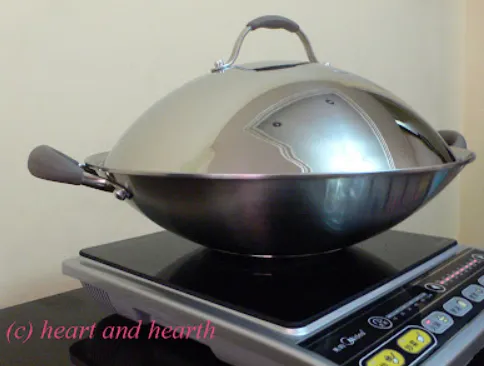
Strategic Decision Framework: Choosing Your Perfect Wok
Decision Matrix by User Archetype
For the Authenticity Purist
-
Primary Choice: Yamada Kogyosho
- Uncompromising traditional Uchidashi craft
- Only remaining hand-hammered manufacturer in Japan
- Requires commitment to traditional seasoning rituals
- Industrial aesthetic is badge of honor, not compromise
-
Luxury Alternative: Iwachu Nanbu Tekki (cast iron preference)
- Certified Traditional Craft of Japan
- 800-year-old casting techniques
- Heirloom investment piece
For the Modern Pragmatist
- Top Choices: Yoshikawa Cook-Pal Ren, Riverlight KIWAME, Pearl Life
- Verified Japanese manufacturing with regional pedigree
- Advanced nitriding technology for effortless maintenance
- Excellent induction cooktop compatibility
- Modern engineering solving traditional problems
For the Performance-First Cook
- Top Choice: Yosukata (if origin doesn't matter)
- Consistent 8.0/10 expert performance ratings
- Superior heat dynamics and user-friendly design
- Exceptional value at $60-65 price point
- Pre-seasoned convenience
For the Budget-Conscious Beginner
-
Reliable Choice: Joyce Chen
- 50+ years market-tested design
- Accessible $30-40 price point
- Solid introduction to wok cooking fundamentals
- Spun carbon steel construction
-
Alternative: Summit Kogyo entry models
- Authentic Japanese manufacturing at accessible prices
- Bridge between starter and premium categories
Advanced Considerations for Expert Buyers
Induction Cooktop Compatibility
- Requirement: Flat bottom with magnetic steel composition
- Thickness Needs: 1.6mm+ to prevent warping under concentrated induction heat
- Top Performers: Yoshikawa Cook-Pal Ren, Pearl Life engineered models
Professional/Commercial Use
- Durability Priority: Hand-hammered (Yamada) or heavy-gauge spun construction
- Maintenance Tolerance: Traditional carbon steel for ultimate performance
- Volume Considerations: Multiple wok sizes for different dish requirements
Collector/Enthusiast Investment
- Heritage Value: Iwachu Nanbu Tekki, Sori Yanagi design pieces
- Craft Appreciation: Yamada Kogyosho traditional techniques
- Future Availability: Hand-craft techniques becoming increasingly rare
Technical Matching Guide
Heat Source Optimization:
| Cooktop Type | Optimal Wok Characteristics | Top Japanese Brand Matches |
|---|---|---|
| High-BTU Gas | Round bottom, thinner gauge (1.2-1.4mm) | Yamada Kogyosho 1.2mm |
| Standard Gas | Flat bottom, medium gauge (1.6mm) | Summit Kogyo, Pearl Life |
| Electric Coil | Flat bottom, thicker gauge (1.6-2.0mm) | Yoshikawa Cook-Pal Ren |
| Induction | Flat bottom, heavy gauge (2.0mm+) | Yoshikawa, Riverlight KIWAME |
| Glass-top Electric | Flat bottom, smooth surface, stable base | Pearl Life lightweight models |
Cooking Style Alignment:
| Primary Technique | Ideal Wok Features | Recommended Brands |
|---|---|---|
| Traditional Stir-Fry | Hand-hammered texture, responsive steel | Yamada Kogyosho |
| Multi-Method Cooking | Versatile construction, easy maintenance | Summit Kogyo range |
| Modern Convenience | Low-maintenance, user-friendly | Yoshikawa, Pearl Life |
| Authentic Chinese | Traditional construction, classic setup | Yamada or quality Chinese brands |
| Japanese Chuka Ryori | Adapted design, modern compatibility | Any authentic Japanese brand |
Understanding Regional Manufacturing Excellence
The Tsubame-Sanjo Advantage
Multiple authentic manufacturers cluster in Niigata Prefecture's Tsubame-Sanjo region for compelling reasons:
Historical Foundation: 400+ years of metalworking heritage dating to Edo period nail production
Modern Innovation: Advanced metallurgy research combined with traditional craft knowledge
Skilled Labor Pool: Concentrated expertise in precision metalworking techniques
Quality Standards: Regional reputation demands uncompromising manufacturing excellence
Technology Access: Cutting-edge equipment for nitriding, precision forming, surface treatments
🏭 Manufacturing Note: "Made in Tsubame-Sanjo" represents Japan's highest tier of cookware manufacturing—equivalent to "Swiss Made" for watches or "Champagne" for sparkling wine.
Quality Verification Strategies
Authentic Japanese Markers:
- Specific regional manufacturing locations (Tsubame-Sanjo, Yokohama, Chiba)
- Company histories traceable to mid-20th century or earlier
- Technical innovation focus (nitriding, precision engineering)
- Price points reflecting Japanese labor and manufacturing costs
- Distribution through specialty cookware retailers, not just mass market
Red Flags for Imposters:
- Japanese names with vague company origin stories
- Prices significantly below authentic Japanese manufacturing costs
- Generic "designed in Japan" or "Japanese-style" language
- Primary distribution through mass market channels only
- Lack of specific technical manufacturing details
Maximizing Your Wok Investment
Essential Preparation Knowledge
Traditional Carbon Steel Setup:
- Factory Coating Removal: High-heat burn-off of protective varnish
- Initial Seasoning: Multiple oil-heating cycles building base patina
- Break-in Period: Gradual development of non-stick properties
- Maintenance Routine: Immediate drying, light oiling, proper storage
Nitrided Wok Preparation:
- Simple Wash: Remove any packaging residue
- Light Seasoning: Single oil-heating cycle for optimal performance
- Immediate Use: Ready for full cooking capability
- Simplified Maintenance: More forgiving cleaning and storage
📚 Complete Guides: Our seasoning tutorial covers both traditional and modern approaches, while our maintenance guide ensures long-term performance.
Essential Accessories for Japanese Woks
Traditional Tools:
- Chuan (Wok Spatula): Long-handled, curved edge matching wok contour
- Hoak (Ladle): Large capacity for liquid manipulation and serving
- Bamboo Brush: Gentle cleaning without patina damage
- Tawashi Brush: Palm-fiber scrubbing for stubborn residue
Modern Conveniences:
- Wok Ring: Stabilizes round-bottom woks on standard burners
- Silicone Handle Covers: Heat protection for extended cooking sessions
- Lid Options: Dome-shaped for steaming and braising techniques
Common Pitfalls and How to Avoid Them
Purchase Mistakes
- Falling for Japanese branding without verifying actual manufacturing origin
- Choosing inappropriate thickness for your specific cooktop type
- Ignoring handle construction quality and attachment method
- Overlooking maintenance requirements for traditional carbon steel
Setup Errors
- Inadequate ventilation for high-heat wok cooking
- Wrong burner size relative to wok bottom diameter
- Insufficient heat output for proper wok hei development
- Poor initial seasoning leading to sticking problems
Maintenance Failures
- Using harsh detergents that strip protective patina
- Allowing air-drying leading to rust development
- Storing while damp causing corrosion damage
- Overheating empty wok causing warping or surface damage
The Future of Japanese Wok Manufacturing
Preservation Challenges
- Artisan skill transfer: Traditional hand-hammering techniques at risk
- Cost pressures: Japanese labor costs vs. global competition
- Market education: Consumer understanding of authentic vs. marketed quality
- Technology balance: Maintaining craft heritage while embracing beneficial innovations
Innovation Directions
- Advanced surface treatments: Evolution beyond current nitriding techniques
- Hybrid constructions: Combining multiple materials for optimal performance
- Smart compatibility: Enhanced design for modern induction and precision cooking
- Sustainability focus: Environmentally conscious manufacturing processes
Investment Wisdom
- Heritage pieces (Yamada, Iwachu) likely to appreciate as techniques become rarer
- Regional specialization (Tsubame-Sanjo) maintaining competitive advantages
- Technology leaders (Yoshikawa, Riverlight) continuing innovation cycles
- Market education increasing consumer appreciation for authentic quality
Frequently Asked Questions: Expert Answers
Fundamental Questions
Q: Are Japanese woks actually Japanese, or are they just Chinese woks made in Japan?
A: This is the core confusion in the market. Woks originated in China during the Han Dynasty, but Japan's adoption created unique innovations. Japanese "chukanabe" evolved through Japan's sophisticated metalworking traditions, resulting in:
- Advanced nitriding surface treatments
- Precision engineering for modern stovetops
- Hybrid designs optimized for Japanese cooking styles
- Superior quality control and manufacturing standards
The key distinction: authentic Japanese woks represent technological advancement and quality refinement of the original Chinese concept, not mere replication.
Q: Why are authentic Japanese woks so much more expensive than Chinese-made alternatives?
A: Several factors drive pricing differences:
- Labor costs: Japanese skilled metalworkers command premium wages
- Manufacturing scale: Lower volume production vs. mass Chinese manufacturing
- Material quality: Premium steel grades and advanced surface treatments
- Quality control: Rigorous testing and finish standards
- Technology investment: R&D costs for innovations like nitriding processes
You're paying for verifiable craftsmanship and technological advancement, not just cooking performance.
Q: Can I use a Japanese wok for traditional Chinese cooking techniques?
A: Absolutely! Japanese woks excel at traditional Chinese techniques, often with advantages:
- Enhanced durability from advanced surface treatments
- Better heat control from precision engineering
- Improved maintenance from nitrided surfaces
- Modern compatibility with home kitchen equipment
However, purists seeking absolute traditional authenticity might prefer Chinese-made woks using traditional methods.
Technical Questions
Q: What's the difference between nitrided and traditional carbon steel woks?
A: Traditional Carbon Steel:
- Requires intensive initial seasoning
- Develops patina over time through use
- More maintenance-intensive (immediate drying, regular oiling)
- Classic cooking experience and performance
- Lower initial cost
Nitrided Steel:
- Minimal initial preparation required
- Built-in rust resistance from manufacturing
- Lower maintenance requirements
- Slightly different cooking feel (some prefer, others don't)
- Higher initial cost, lower long-term effort
Q: Are Japanese woks compatible with induction cooktops?
A: Most authentic Japanese carbon steel and iron woks work excellently on induction, with important considerations:
- Flat bottom required for proper contact
- Minimum thickness: 1.6mm+ prevents warping
- Quality magnetic steel: All authentic Japanese brands use compatible materials
- Size matching: Wok flat area should match induction zone size
Top induction performers: Yoshikawa Cook-Pal Ren, Riverlight KIWAME series.
Q: How do I verify if a "Japanese" wok is actually made in Japan?
Verification Strategies:
- Specific manufacturing locations: Look for Tsubame-Sanjo, Yokohama, Chiba
- Company history: Established Japanese companies have traceable heritage
- Price reality check: Authentic Japanese manufacturing costs reflect in pricing
- Technical specifications: Detailed metallurgy information, not just marketing
- Distribution channels: Specialty cookware retailers vs. mass market only
- Language precision: "Made in Japan" vs. "Japanese-style" or "designed in Japan"
Practical Usage Questions
Q: Which Japanese wok is best for beginners?
For Absolute Beginners: Summit Kogyo entry models
- Authentic Japanese quality
- More forgiving than traditional carbon steel
- Accessible pricing
- Good introduction to Japanese engineering
For Committed Learners: Pearl Life nitrided models
- User-friendly features
- Low maintenance requirements
- Excellent performance foundation
- Room to grow cooking skills
Q: What size Japanese wok should I buy for home cooking?
14-inch diameter: Sweet spot for most home kitchens
- Adequate capacity for 2-4 servings
- Manageable weight for tossing techniques
- Fits most home burners effectively
- Available in all major Japanese brands
12-inch: Compact option for smaller households or limited storage 16-inch: Large family cooking, requires powerful heat source
Q: Can I put a Japanese wok in the dishwasher?
Never. Even nitrided Japanese woks should be hand-washed:
- Traditional carbon steel: Dishwasher will strip protective patina
- Nitrided surfaces: While more durable, hand-washing preserves optimal performance
- Proper method: Hot water, minimal soap, immediate thorough drying
- Storage: Light oil coating prevents oxidation
Your Action Plan: From Research to Purchase
Step 1: Define Your Priorities (Weight Each Factor 1-10)
- [ ] Authenticity/Heritage: How important is verified Japanese manufacturing?
- [ ] Performance: Raw cooking capability and heat dynamics
- [ ] Convenience: Low maintenance, user-friendly features
- [ ] Budget: Price sensitivity and value considerations
- [ ] Aesthetics: Visual appeal and design philosophy
- [ ] Longevity: Heirloom quality and durability expectations
Step 2: Assess Your Kitchen Setup
- [ ] Cooktop type: Gas, electric, induction compatibility needs
- [ ] Heat output: BTU capacity for proper wok hei development
- [ ] Ventilation: Adequate exhaust for high-heat cooking
- [ ] Storage: Space for proper wok storage and accessories
- [ ] Usage frequency: Daily cooking vs. occasional use plans
Step 3: Match Brand to Your Profile
Authenticity Purist → Yamada Kogyosho or Iwachu
Modern Pragmatist → Yoshikawa, Riverlight, or Pearl Life
Performance Focus → Yosukata (best performance/price) or Yamada (ultimate performance)
Budget Conscious → Joyce Chen or Summit Kogyo entry models
Step 4: Source from Reputable Vendors
- Specialty cookware retailers: Williams Sonoma, Sur La Table
- Japanese import specialists: Direct importers with authentication
- Brand official distributors: Verified authorized dealers
- Avoid: Generic Amazon sellers without brand verification
Step 5: Prepare for Success
- [ ] Read our complete seasoning guide
- [ ] Plan your first cooking session
- [ ] Understand maintenance requirements
- [ ] Gather essential accessories (spatula, ladle, cleaning tools)
Final Verdict: Cutting Through the Marketing
The Japanese wok market rewards informed consumers who understand the distinction between authentic manufacturing and marketing narratives. This guide has equipped you with the knowledge to make decisions based on your actual priorities rather than brand positioning.
Key Takeaways
-
Authenticity vs. Performance: Both matter, but they're different values. Yosukata proves that non-Japanese woks can outperform some authentic brands, while Yamada Kogyosho shows that traditional craft still has unmatched qualities.
-
Technology Benefits: Japanese innovations like nitriding solve real problems. If you want Japanese quality without traditional maintenance demands, these advances are genuinely valuable.
-
Regional Excellence: Tsubame-Sanjo represents a legitimate competitive advantage in metalworking—similar to recognizing Champagne or Swiss watchmaking regions.
-
Investment Philosophy: A well-chosen, properly maintained wok from any quality manufacturer will serve you better than a premium neglected one. Match the tool to your commitment level.
-
Market Evolution: As traditional hand-hammering skills become rarer and Chinese manufacturing quality improves, the distinctions between "authentic" and "performance" may continue blurring.
The Bottom Line
Choose based on your honest self-assessment:
- If heritage and traditional craft inspire you: Yamada Kogyosho or Iwachu represent uncompromising authenticity
- If you want Japanese innovation with modern convenience: Yoshikawa, Riverlight, or Pearl Life deliver advanced engineering
- If performance matters most: Yosukata offers exceptional cooking capability regardless of origin
- If you're starting your wok journey: Joyce Chen or Summit Kogyo provide solid foundations for skill development
Remember: the best wok is the one you'll use consistently and maintain properly. A $200 Japanese wok that sits unused serves you less than a $40 starter wok that gets you cooking daily.
The goal isn't just buying authentic Japanese cookware—it's elevating your cooking through understanding, skill development, and the right tools for your specific needs and commitment level.
Ready to Start Cooking? Explore our complete library of Japanese wok techniques, authentic recipes, and setup guides to maximize your investment and cooking potential.
Have questions about specific brands or techniques? Our growing library at chukanabe.com continues expanding with expert guides, detailed reviews, and authentic recipes for serious wok cooking enthusiasts.
Comments
Post a Comment